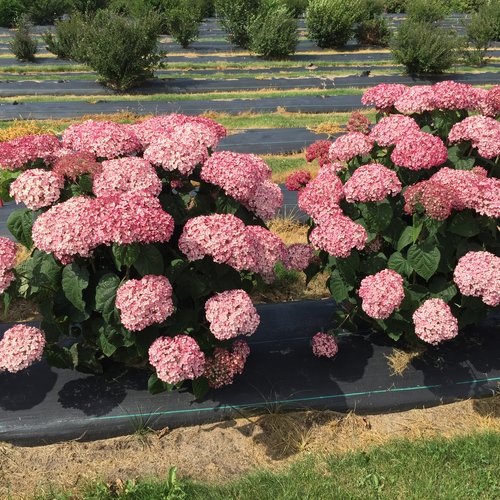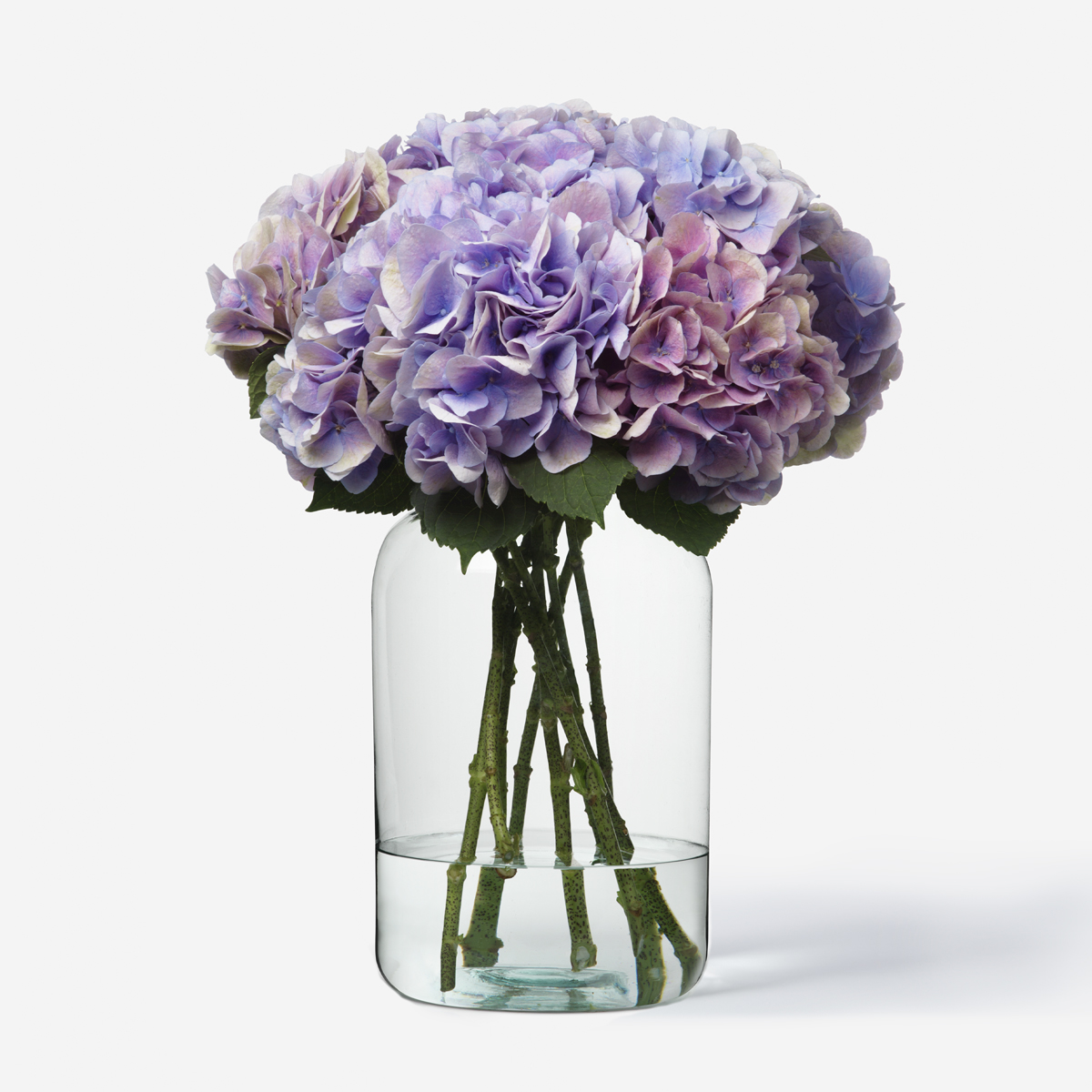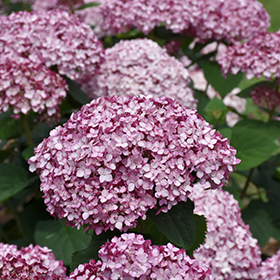Blush Hydrangea: The Ultimate Guide To Growing And Caring For This Beautiful Flower
Hydrangeas are some of the most popular and beloved flowers in the world. They come in a wide variety of colors, sizes, and shapes, making them a versatile addition to any garden. Blush hydrangeas are a particular favorite, thanks to their delicate pink blooms.
If you're thinking about adding a blush hydrangea to your garden, here's everything you need to know about growing and caring for this beautiful flower.
What is a Blush Hydrangea?
A blush hydrangea is a type of smooth hydrangea (Hydrangea arborescens). Smooth hydrangeas are known for their large, round flower clusters, which can reach up to 12 inches in diameter. Blush hydrangeas typically have pink blooms, but the color can vary depending on the soil pH. In acidic soil, blush hydrangeas will have a deeper pink color, while in alkaline soil, they will be more of a light pink or even white.
Blush hydrangeas are relatively easy to grow and care for, making them a good choice for even beginner gardeners. They are hardy in USDA zones 3-8 and can tolerate a wide range of temperatures. They also prefer full sun to partial shade and moist, well-drained soil.
How to Plant Blush Hydrangeas
Blush hydrangeas can be planted in the spring or fall. When planting, choose a location that receives full sun to partial shade. The soil should be moist and well-drained. If your soil is sandy or clayey, you may need to add some compost or peat moss to improve drainage.
Dig a hole that is twice as wide and as deep as the root ball of the hydrangea. Place the hydrangea in the hole and backfill with soil, tamping down gently to remove any air pockets. Water the hydrangea thoroughly.
How to Care for Blush Hydrangeas
Blush hydrangeas are relatively low-maintenance plants, but they do require some basic care. Here are a few tips on how to care for your blush hydrangeas:
- Water regularly, especially during hot, dry weather.
- Fertilize in the spring with a balanced fertilizer.
- Deadhead spent blooms to encourage new growth.
- Protect from frost in cold winter climates.
How to Prune Blush Hydrangeas
Blush hydrangeas can be pruned in the spring or fall. If you prune in the spring, you will encourage new growth and more blooms. If you prune in the fall, you will help to shape the plant and remove any dead or diseased branches.
To prune a blush hydrangea, use sharp pruning shears. Cut back the stems by one-third to one-half of their length. Be sure to cut just above a bud.
Problems to Watch For
Blush hydrangeas are generally healthy plants, but they can be susceptible to a few problems. Here are a few things to watch for:
- Leaf spot: This fungal disease can cause brown or black spots on the leaves. To treat leaf spot, you can use a fungicide.
- Pests: Blush hydrangeas can be susceptible to a variety of pests, including aphids, scale, and spider mites. To control pests, you can use insecticidal soap or neem oil.
- Winter damage: Blush hydrangeas can be damaged by cold winter temperatures. To protect your plants from winter damage, you can mulch around the base of the plants and cover them with a burlap sack or other protective material.
Conclusion
Blush hydrangeas are beautiful and easy-to-grow flowers that can add a touch of elegance to any garden. With proper care, your blush hydrangeas will bloom for years to come.
Blush hydrangeas are a beautiful addition to any garden. With their large, silvery-pink blooms, they can add a touch of elegance and sophistication to any landscape. But did you know that there's more to blush hydrangeas than just their stunning beauty?
Blush hydrangeas are also relatively easy to care for. They can tolerate a wide range of soil conditions and are not as susceptible to pests and diseases as some other types of hydrangeas. In addition, blush hydrangeas can grow in a variety of climates, from USDA zones 3 to 9.
If you're interested in learning more about blush hydrangeas, I encourage you to visit . This website has a wealth of information about blush hydrangeas, including their care requirements, planting tips, and more.
FAQ of blush hydrangea
1. What is a blush hydrangea?
A blush hydrangea is a type of hydrangea that blooms in shades of pink, from light pink to deep pink. It is a deciduous shrub that grows 3-6 feet tall and wide. Blush hydrangeas are known for their large, showy flowers that bloom in the summer. They are relatively easy to care for and make a beautiful addition to any garden.
2. What color is a blush hydrangea?
The color of a blush hydrangea can vary depending on the soil pH. In acidic soil, blush hydrangeas will bloom in shades of pink. In alkaline soil, they will bloom in shades of blue. You can change the color of your blush hydrangeas by adding sulfur to the soil to make it more acidic, or by adding lime to the soil to make it more alkaline.
3. How do you care for a blush hydrangea?
Blush hydrangeas are relatively easy to care for. They need full sun to partial shade and well-drained soil. They should be watered regularly, especially during the hot summer months. Blush hydrangeas do not need to be fertilized often, but you can fertilize them with a balanced fertilizer in the spring.
4. How do you deadhead a blush hydrangea?
Deadheading is the process of removing spent blooms from a plant. This encourages the plant to produce more flowers. To deadhead a blush hydrangea, simply pinch off the spent blooms with your fingers. You can also use a pair of scissors to cut the spent blooms off.
5. How do you overwinter a blush hydrangea?
Blush hydrangeas are hardy in USDA zones 3-9. In colder climates, you may need to protect your blush hydrangea from the cold by covering it with a burlap sack or other protective material. You should also water your blush hydrangea regularly during the winter months, even if it is dormant.
Image of blush hydrangea
5 different images of blush hydrangea from Pinterest.com:
- Blush hydrangea in full bloom. This image shows a large bush of blush hydrangea in full bloom. The flowers are a light pink color with a darker pink center. The bush is surrounded by green leaves.

- Blush hydrangea in a vase. This image shows a bouquet of blush hydrangea flowers in a vase. The flowers are a light pink color with a darker pink center. They are surrounded by green leaves.

- Blush hydrangea in a garden. This image shows a blush hydrangea bush in a garden. The flowers are a light pink color with a darker pink center. The bush is surrounded by other flowers and plants.
- Blush hydrangea in a tree. This image shows a blush hydrangea bush growing in a tree. The flowers are a light pink color with a darker pink center. They are hanging down from the branches of the tree.

- Close-up of blush hydrangea flowers. This image shows a close-up of blush hydrangea flowers. The flowers are a light pink color with a darker pink center. The petals are delicate and slightly wavy.


Post a Comment for "Blush Hydrangea: The Ultimate Guide To Growing And Caring For This Beautiful Flower"